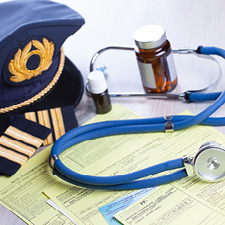Income Protection: Important for Professionals, Critical for Pilots
 I often speak about the importance of income protection, or disability insurance (whichever title resonates more with you), as the hidden gem beneath all successful financial plans. Income protection is the platform on which your financial pyramid sits; it’s the fundamental layer that holds everything intact. If you think about everything you pay for in a given year, rent or mortgage, vehicles, food, utilities, vacation and savings, you’ll notice they all have one thing in common – they’re supported by your income.
I often speak about the importance of income protection, or disability insurance (whichever title resonates more with you), as the hidden gem beneath all successful financial plans. Income protection is the platform on which your financial pyramid sits; it’s the fundamental layer that holds everything intact. If you think about everything you pay for in a given year, rent or mortgage, vehicles, food, utilities, vacation and savings, you’ll notice they all have one thing in common – they’re supported by your income.
Whether you’ve created a financial plan or not, you can understand that everything relies on your income. The key is keeping that income stream flowing as you progress towards your plan and targets.
Everyone who earns an income faces an equal risk of losing it. One in four of today’s working population will be left without their income for more than 90 days before they retire, specifically caused by an injury or illness. What’s worse, 90 days is the small number in the equation. Once you surpass the 90 day marker, there’s a 78% chance you’ll lose your income stream for the next 36 months. A situation that would leave most in complete financial ruin.
As mentioned in the title, income protection is imperative for any professional earning an honest income. But, there’s a certain segment of professionals that face the greatest risk: pilots.
Pilots hold a significant responsibility in their roles, not just for their own family’s well-being, but also for the families of the 200 passengers behind them every time those wheels leave the ground. And if you’ve ever been able to glance inside a cockpit, you’ll quickly see that there’s hundreds of critical components to a successful flight, not just speed and engine RPM’s like most of us are used to.
For pilots, however, the risk isn’t in the air, it’s on the ground. Holding a First or Second Class license to operate an aircraft is serious business. Depending on your class, you face a bare minimum of annual medical tests. These aren’t your average annual check-ups either, these are medical exams designed to determine if you’re in peak physical and emotional condition to pilot a 150,000 pound aircraft. For First Class pilots over 40 years of age, the exams occur every six months, or twice as often as a Second Class pilot.
To say a majority of pilots pass their exams would be true. But, to say all pilots pass, would be a misinformed statement. Unfortunately, as our bodies progress through time, we become increasingly susceptible to various medical conditions. Chronic pain, diabetic malnutrition, stress, cardiovascular impairments, vision loss, nervous system malfunctions, hearing loss, the list goes on…all of which, in a high-performance test, can lead to less than desirable outcomes.
As a working professional, if you’re diagnosed with cancer and forced to schedule your first chemotherapy session, work continues until then. Perhaps even for the extremely motivated, you continue to work for the next month or two after. Essentially, you wake up every morning with the choice to push past pain and discomfort, or let it take over. There are stages in cancer treatment where being productive is completely out of the picture, and that’s when you’re able to benefit from a financial safety net like income protection.
 As a pilot, however, the choice is not in your control to fly or not. Upon a cancer diagnosis and initial chemotherapy session, you’re unfit to fly. By an AME’s (Aviation Medical Examiner) standards, your license to fly is temporarily suspended. What are you to do?
As a pilot, however, the choice is not in your control to fly or not. Upon a cancer diagnosis and initial chemotherapy session, you’re unfit to fly. By an AME’s (Aviation Medical Examiner) standards, your license to fly is temporarily suspended. What are you to do?
For the next month or two you’re a full-functioning human, capable of physically flying that aircraft, yet handcuffed by federal aviation regulations. Despite being unfit to fly, a traditional disability insurance carrier will see you as a fully-capable human, preventing you from being able to submit a claim with a financially positive outcome. So, again, the question stands…what are you to do?
For a pilot, gambling your financial plan on a decision outside of your control holds obvious risks. If you have one bad visit with your AME, you’re faced with significant financial losses.
If you’re a risk-averse pilot who understands that placing everything on the line is not a viable option, you should seek income protection tied to the status of your medical certificate. Meaning, regardless of your physical ability to fly, benefits will trigger upon the suspension of your medical certificate due to your injury or illness. There is a solution called Loss of License insurance.
As a working professional, your risks of losing your income to a medical situation are real. As a pilot, those risks are even greater. The only way to justify whether protecting that income is appropriate or not, is to ask yourself this simple question:
“Would I be okay if I retired tomorrow?”
If the answer is yes, then I applaud you for building the assets you’ve worked so hard for. If your answer is no, or not preferably, then I encourage you to seek out an income protection plan that suits you.